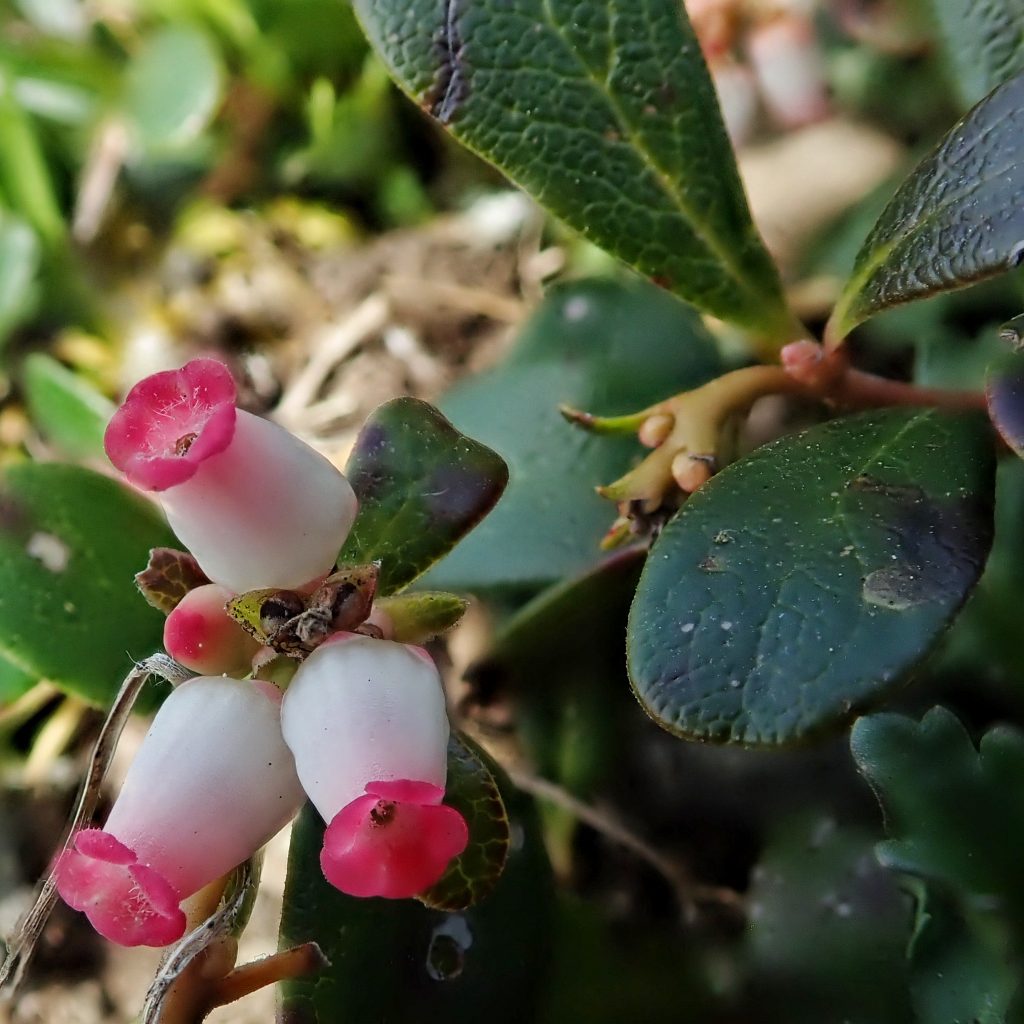
This is an interesting and important genus, especially in some coastal areas. There are over 60 species in North America, and over half of them can be found along the California coastline. Only about a dozen of those fall within the purview of this website, and only two, Arctostaphylos uva-ursi and A. nevadensis form prostrate mats. A. nevadensis has long, narrow pointed leaves, and A. uva-ursi has oval leaves with rounded tips, so this species is fairly easy to identify.
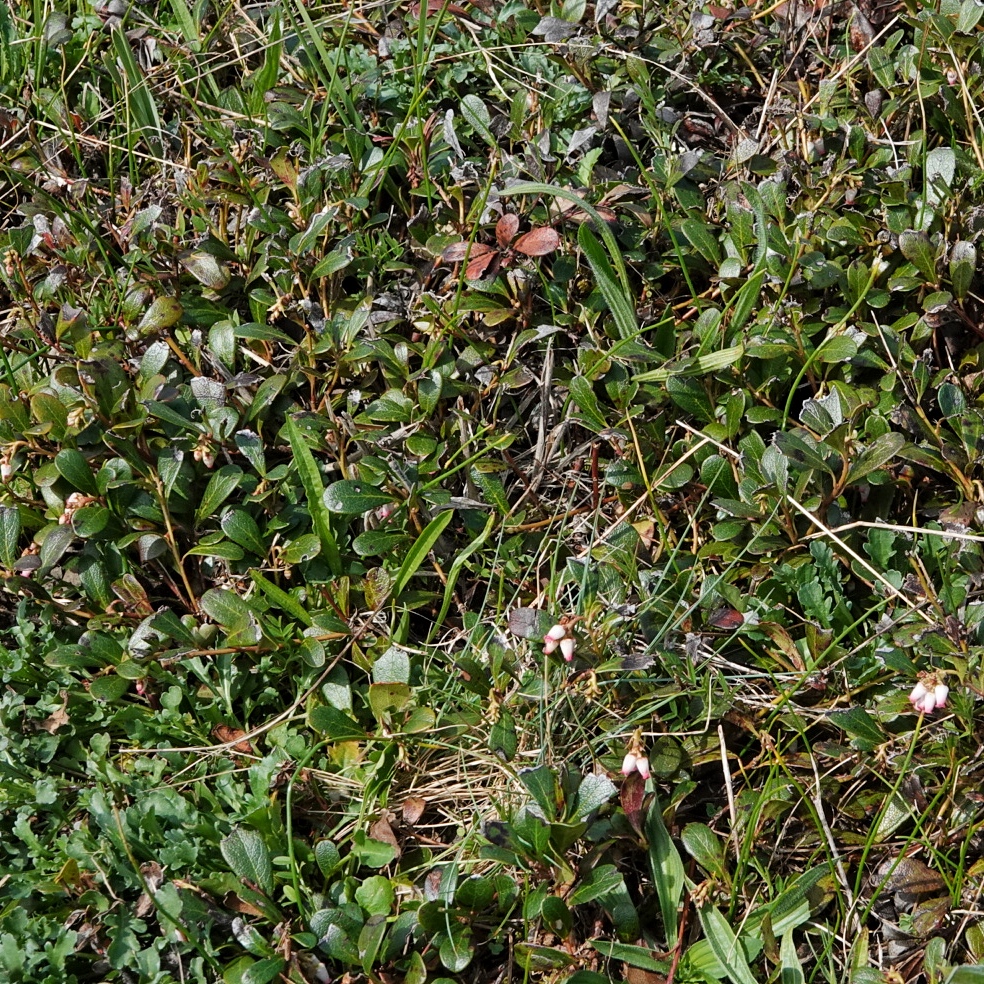
It shares many traits with its cousins, among them a tolerance, and possibly preference, for nutrient poor, acidic soils, that are frequently beset by fire. They manage these conditions by forming relationships with a diverse group of mycorrhizal fungi to access the nutrients that are there, most of which also form partnerships with conifers, and trees and shrubs in the birch, willow, and rose families, ensuring a cyclical successional dynamic in areas prone to fires.
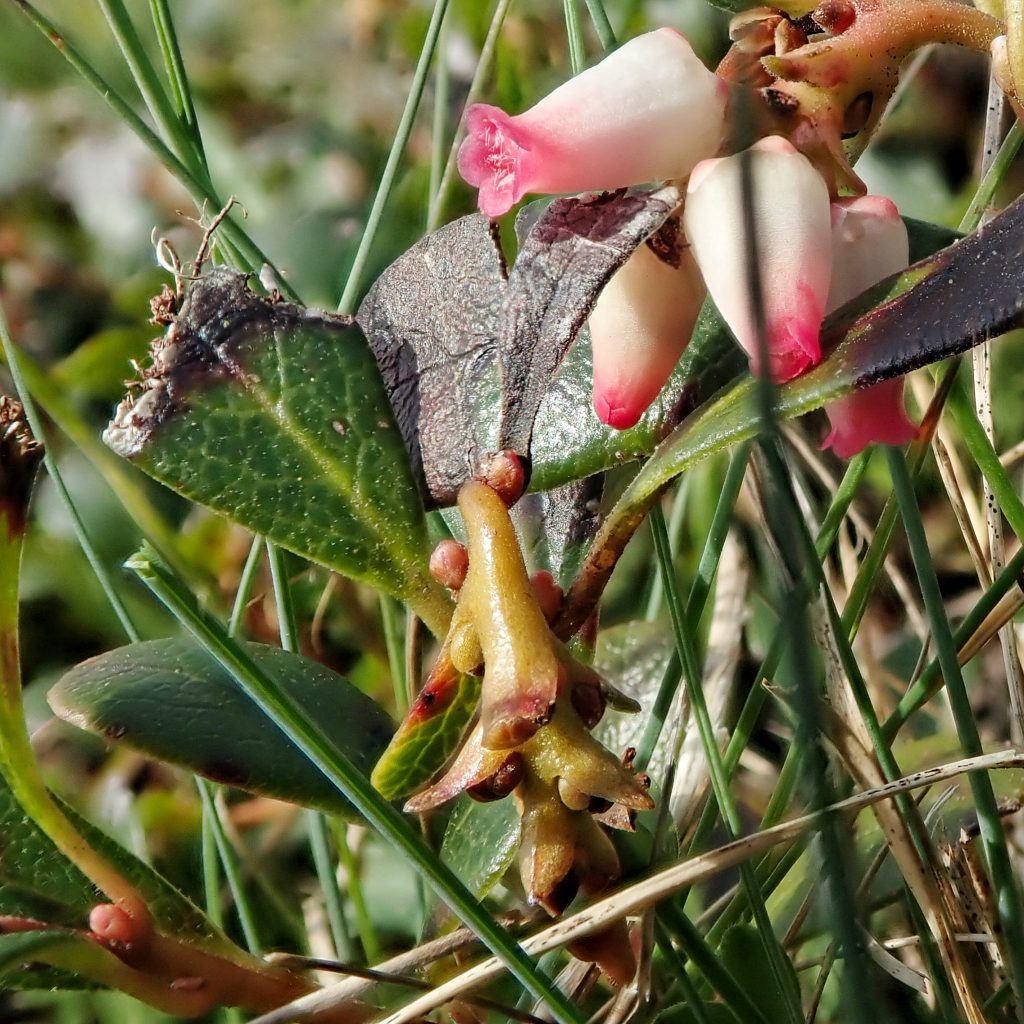
The primary adaptation of species in this genus to cope with regeneration after the periodic wildfires is the formation of a burl. This is a swollen, woody mass at the base of the stem which contains dormant buds that sprout after the rest of the plant has been burned. Kinnikinnick doesn’t always have burls, but when it does they are usually epicormic, which means they were established at nodes where the creeping stems had rooted. The growth of these buds is suppressed by hormones from the upper vegetation, but if that is destroyed they can then begin to sprout.
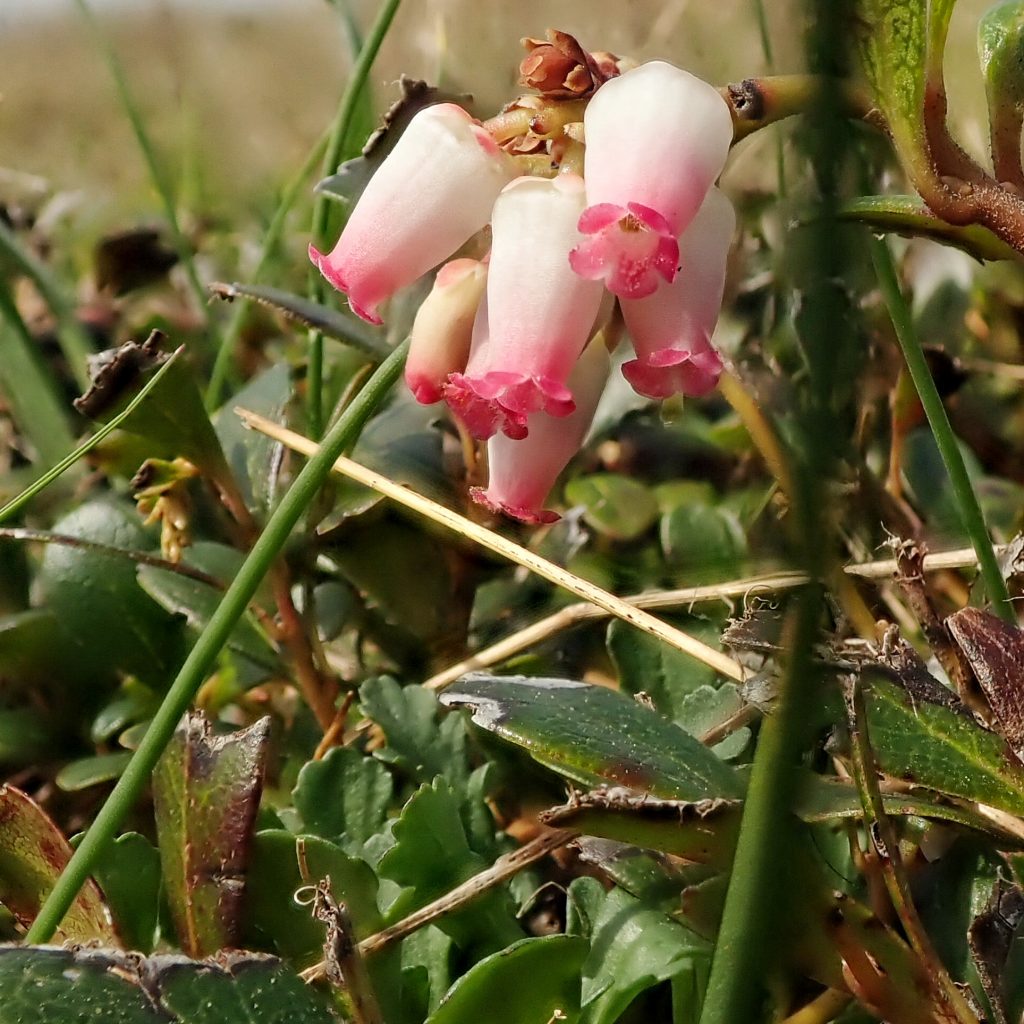
Besides it’s importance to a variety of wildlife, Arctostaphylos uva-ursi has a long tradition of usage by indigenous cultures. The first thing I think of when associating this plant with indigenous cultures was its use in smoking mixtures. Indigenous cultures in North America have been smoking kinnikinnick, along with (and often mixed with) native tobacco like Nicotiana attenuata and N. quadrivalvis since long before the Europeans began to colonize the continent, doing so for social, spiritual , and medicinal purposes. They often added leaves and bark of dogwoods (Cornus spp.) and sumac (Rhus spp.) to improve the flavor and for additional medicinal and spiritual benefits.
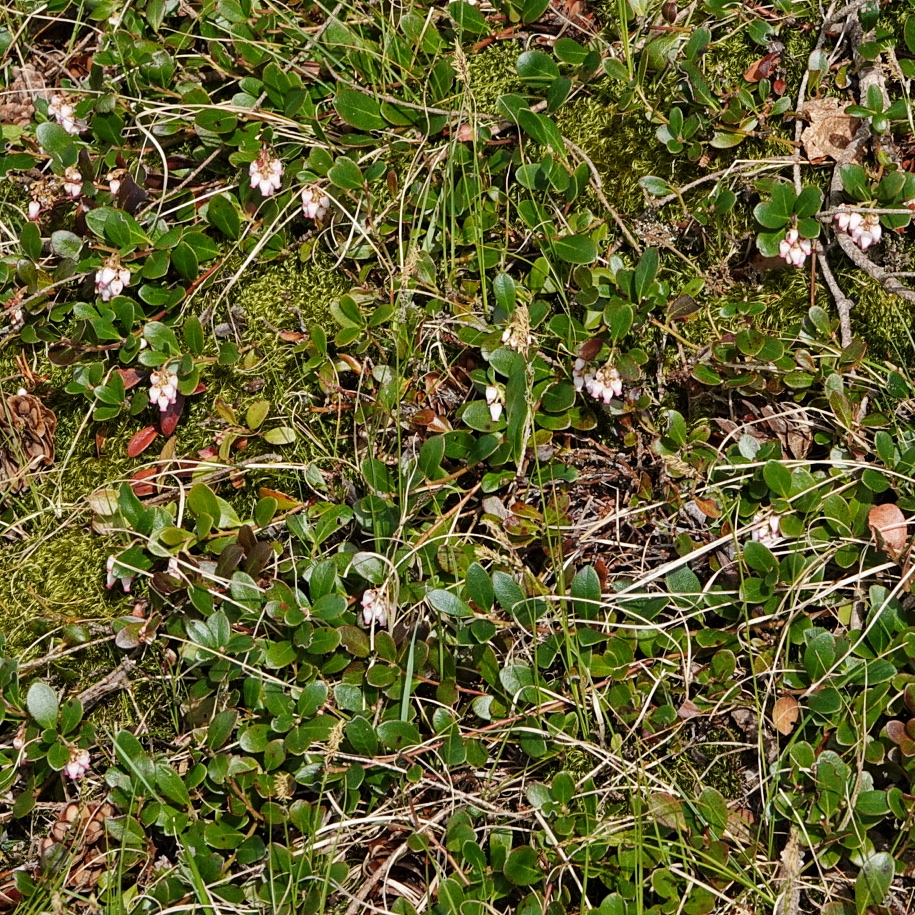
Usage of this plant as food is limited to using the berries, which can be eaten raw (although they are rather pithy and insipid in that state), or mixed with or fried in grease. They also were cooked into soups, and mixed with salmon eggs. Kinnikinnick was also used extensively in medical treatment. An infusion of the whole plant was used to treat skin ailments, as was the ash of the leaves. The infusion was also used as a mouthwash, and tea from the bark and leaves was used to treat back pain and urinary problems.
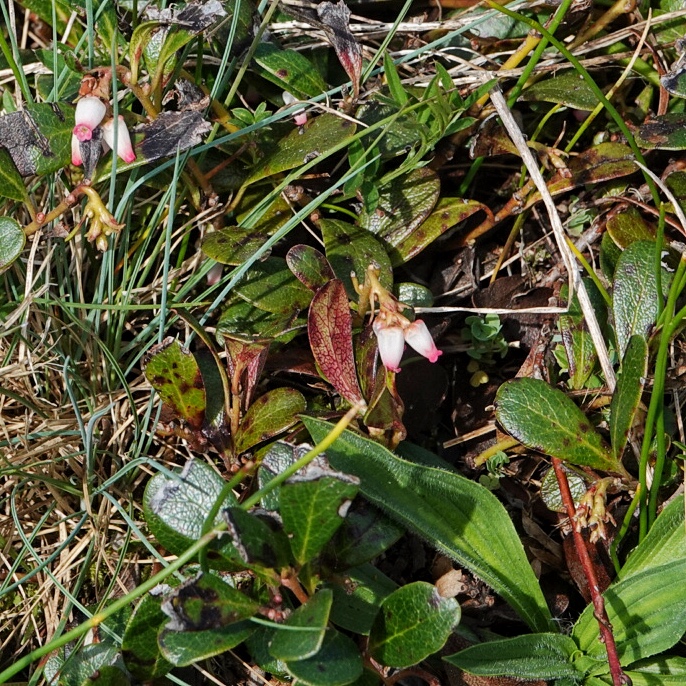
From a purely aesthetic viewpoint this is a wonderful plant, and always a joy to find, although a true appreciation of its tiny flowers requires a hands and knees viewing. But even standing one can see the hints of color mixed with the intricate texture. Arctostaphylos uva-ursi is also a polite and well behaved plant and doesn’t tend to crowd out nearby species. These traits make this a perfect ground cover for the wildlife friendly garden/landscape.

Description-Low growing shrub (seldom over 6” tall) with lax stems and oval, leathery leaves that are a darker green on top than below, seldom are longer than 1”, and have a rounded apex; flowers 4-6 mm, pendant, bell-shaped, light pink to white, with bright pink lips; fruits red; may or may not have burls.
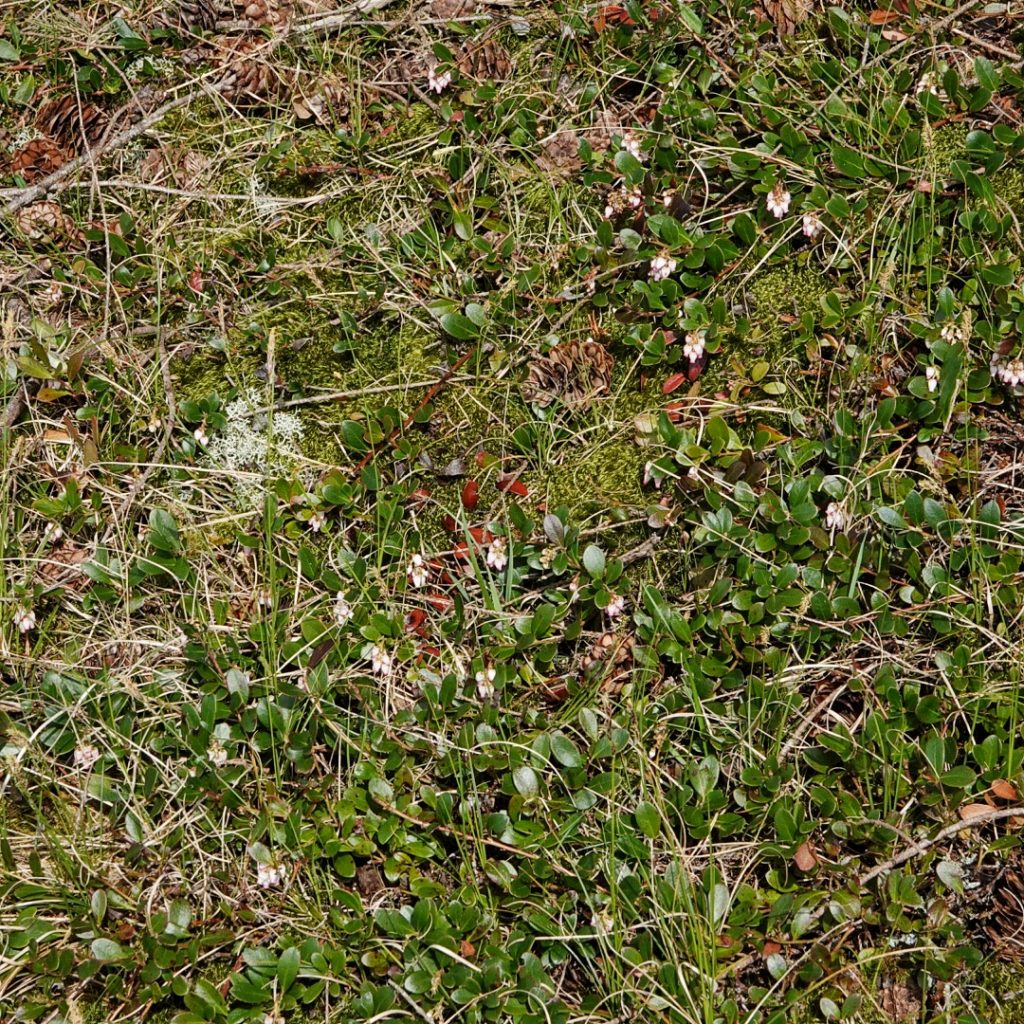
Similar species–A. patula is much larger, with larger leaves; A. viscida is much larger, with pointed leaves that are the same color on both sides; A. nevadensis leaves are long and narrow, with pointed tips, are the same shiny green on both sides, and the flowers are all white; A. columbiana and A. canescens are much larger, and leaves are hairy and have pointed tips.
Habitat-Well drained, undisturbed soils in mesic to dry open forests, forest openings, prairies, up to 7,000’ elevation.
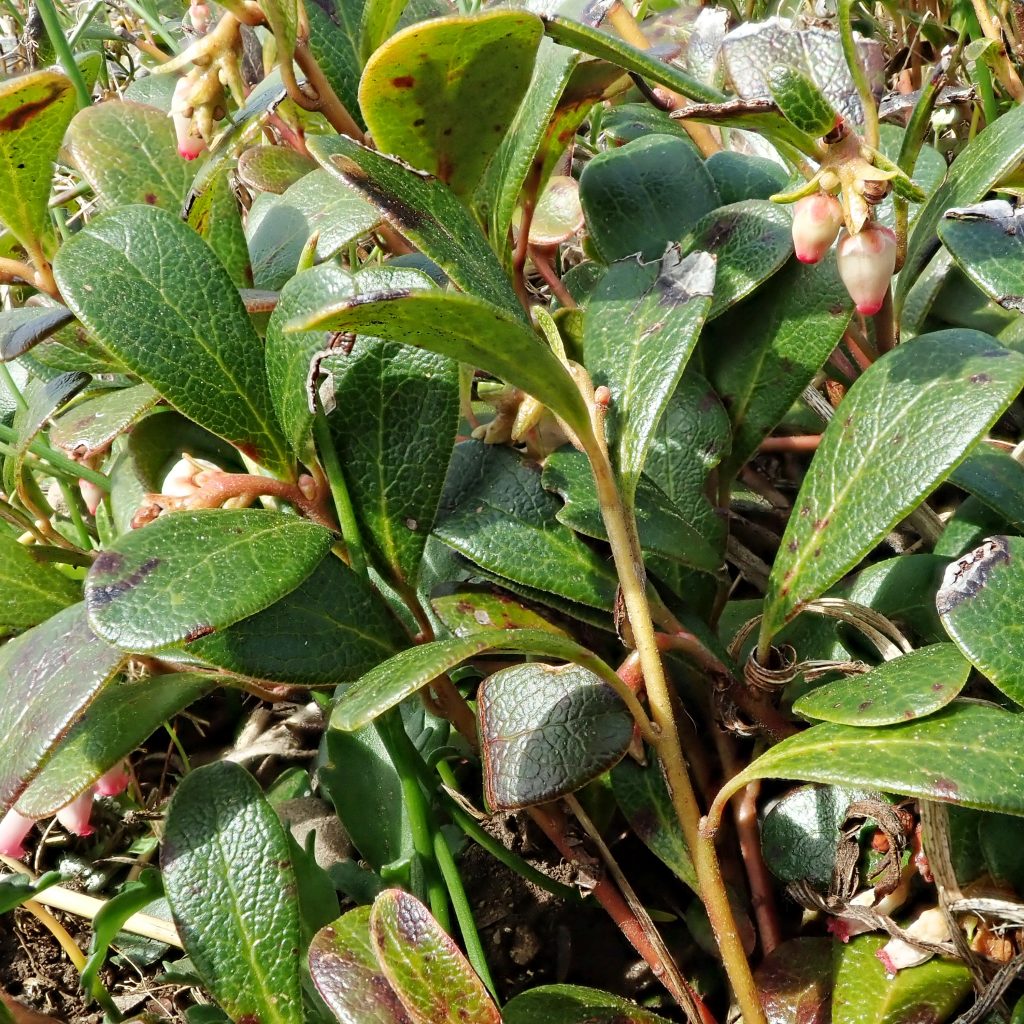
Range-Holarctic, and the only Arctostaphylos found outside of North America; region wide in appropriate habitat.
Reproductive timing-Blooms April until July, depending on elevation; fruit matures beginning in June.
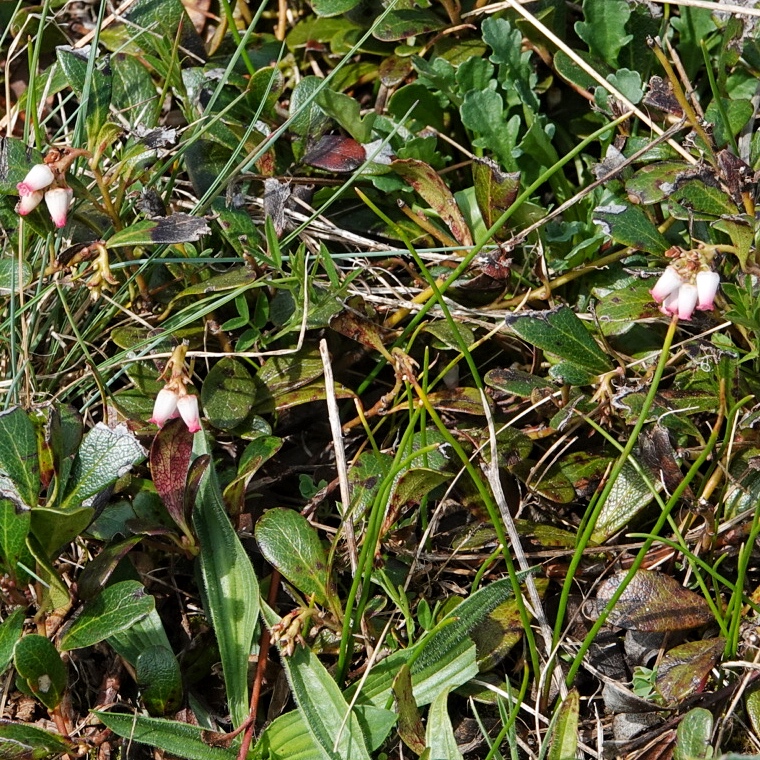
Eaten by-Larval host for the Brown Elfin and Hoary Elfin butterflies, and the moths Aseptis fanatica, Drasteria adumbrata, Epinotia arctostaphylana, and Aethaloida packardaria, amongst dozens of others, as well as the leaf beetles Tymnes oregonensis and Scelolyperus varipes. The leaf gall aphids Tamalia dicksoni and T. coweni feed exclusively on Arctostaphylos spp. Besides the eponymous bears, most other fruit consuming mammals, as well as foxes and coyotes, eat these berries, as do a multitude of birds. Deer, elk, and rabbits browse new shoots, but don’t eat mature growth.
Etymology of names–Arctostaphylos means bear grapes in Greek. The specific epithet uva-ursi means bear grapes in Latin. The common name for all of the low growing Arctostaphylos spp. is bearberry. I’m sensing a theme here.
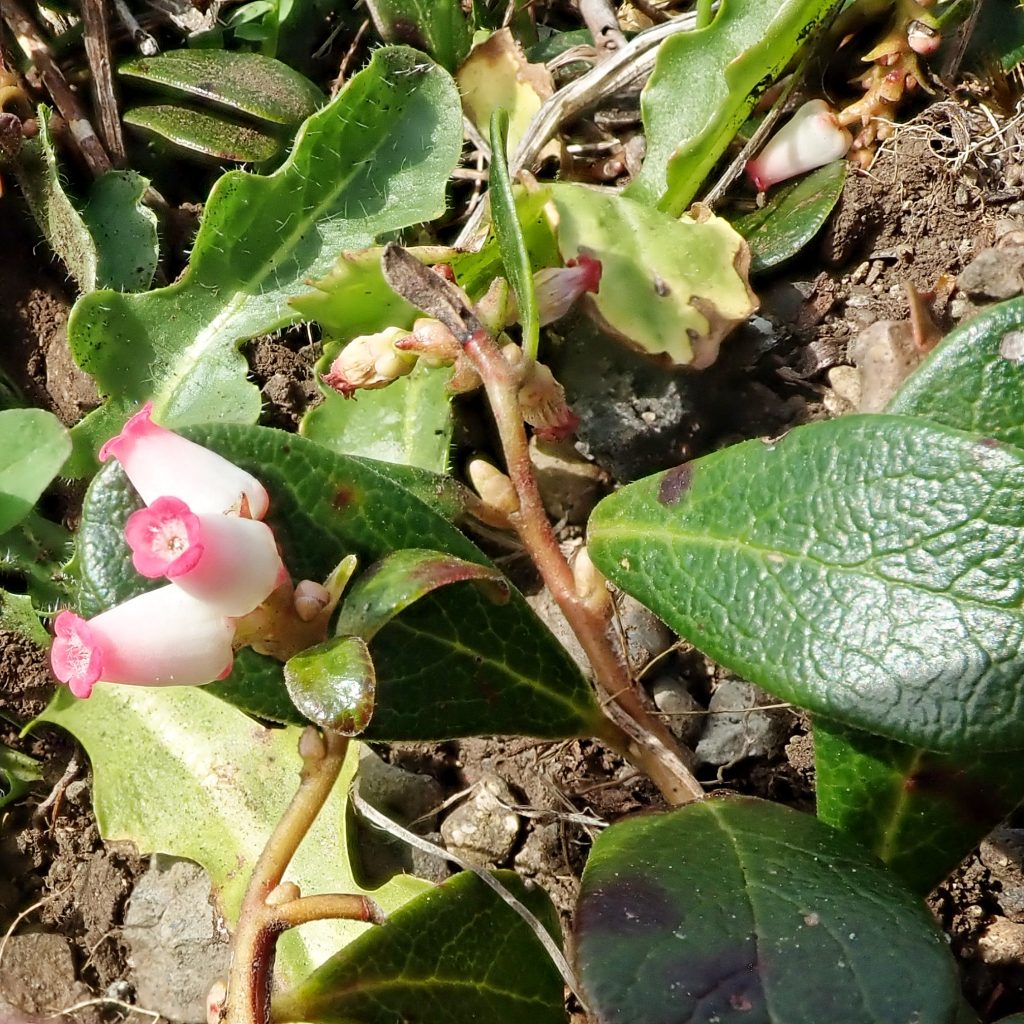
https://deepblue.lib.umich.edu/bitstream/handle/2027.42/95912/Kaplan_Ben_2012.pdf?sequence=1
http://www.efloras.org/florataxon.aspx?flora_id=1&taxon_id=220001038
Arctostaphylos uva-ursi | Kinnickinnick | Wildflowers of the Pacific Northwest
https://www.wnps.org/native-plant-directory/43-arctostaphylos-uva-ursi
http://www.efloras.org/florataxon.aspx?flora_id=1&taxon_id=102495
https://www.wildflower.org/plants/result.php?id_plant=ARUV
https://pfaf.org/user/plant.aspx?latinname=Arctostaphylos+uva-ursi
https://calscape.org/Arctostaphylos-uva-ursi-()
https://en.m.wikipedia.org/wiki/Kinnikinnick
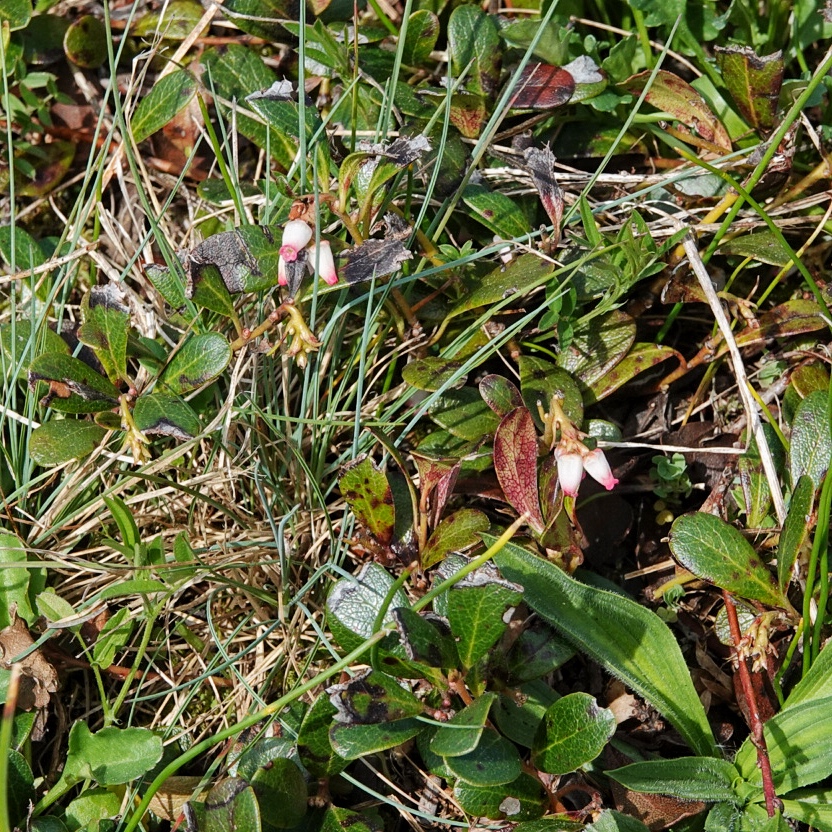
Years ago, in the late 60’s or early 70s, a friend gifted me with this plant in a nice vase which I still have. At least she said it was a Kinnikinick. I remember that it looked more almost like holly to some degree with red berries, seeming before it bloomed into this beautiful flower. I loved seeing this story here. Thank you.
Thanks for the plug!